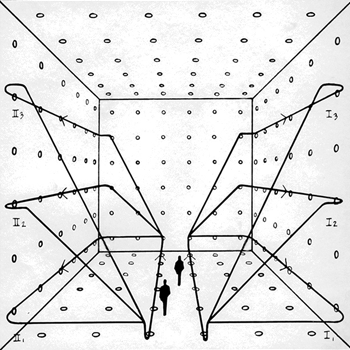What is the distance between the line #(x+1)/7=(y+1)/6=(z+1)/1# and the line #(x-3)/1=(y-5)/(-2)=(z-7)/1# ?
3 Answers
Shortest distance:
Explanation:
Your 2 lines are:
We can write these in parameterised form:
If the line connecting the points on the shortest distance touches
Assuming you can use calculus, we can take partial differentials in order to looks for any critical points:
The shortest distance is therefore:
We could now check the nature of the critical point via the second derivative but, but from a practical perspective, these are skew lines. The CP must be a min.
I might post a non-calculus approach later if i get time. There, we would use the cross product and algebra.
I make it
Explanation:
Line 1:
#t_1 = (x+1)/7=(y+1)/6=(z+1)/1#
That is:
#(x, y, z) = (7t_1-1, 6t_1-1, t_1-1)#
#color(white)((x, y, z)) = (-1, -1, -1) + t_1(7, 6, 1)#
Line 2:
#t_2 = (x-3)/1=(y-5)/(-2)=(z-7)/1#
That is:
#(x, y, z) = (t_2+3, -2t_2+5, t_2+7)#
#color(white)((x, y, z)) = (3,5,7) + t_2(1, -2, 1)#
A line through the points of closest approach of these two lines is perpendicular to both of these lines, so has the same direction as the cross product of
#(7, 6, 1) xx (1, -2, 1) = abs((i, j, k),(7, 6, 1),(1, -2, 1))#
#color(white)((7, 6, 1) xx (1, -2, 1)) = (abs((6, 1),(-2, 1)), abs((1, 7),(1, 1)), abs((7, 6),(1, -2)))#
#color(white)((7, 6, 1) xx (1, -2, 1)) = (8, -6, -20)#
So we want to find
#(-1, -1, -1) + t_1(7, 6, 1) + t_3(8, -6, -20) = (3, 5, 7) + t_2(1, -2, 1)#
Adding
#t_1(7, 6, 1) + t_2(-1, 2, -1) + t_3(8, -6, -20) = (4, 6, 8)#
Which we can rewrite as:
#((7, -1, 8),(6, 2, -6),(1,-1,-20))((t_1),(t_2),(t_3)) = ((4),(6),(8))#
Rewrite as an augmented matrix:
#((7, -1, 8, |, 4),(6, 2, -6, |, 6),(1,-1,-20, |, 8))#
Perform a sequence of row operations to make the left hand side of this matrix into a
#((7, -1, 8, |, 4),(6, 2, -6, |, 6),(1,-1,-20, |, 8)) ->#
#((1, -3, 14, |, -2),(6, 2, -6, |, 6),(1,-1,-20, |, 8)) ->#
#((1, -3, 14, |, -2),(3, 1, -3, |, 3),(1,-1,-20, |, 8)) ->#
#((1, -3, 14, |, -2),(0, 10, -45, |, 9),(0,2,-34, |, 10)) ->#
#((1, -3, 14, |, -2),(0, 1, -9/2, |, 9/10),(0,1,-17, |, 5)) ->#
#((1, -3, 14, |, -2),(0, 1, -9/2, |, 9/10),(0,0, -25/2, |, 41/10)) ->#
#((1, -3, 14, |, -2),(0, 1, -9/2, |, 9/10),(0,0, 1, |, -41/125)) ->#
#((1, 0, 1/2, |, 7/10),(0, 1, -9/2, |, 9/10),(0,0, 1, |, -41/125)) ->#
#((1, 0, 0, |, 108/125),(0, 1, 0, |, -72/125),(0,0, 1, |, -41/125))#
Hence:
#{ (t_1 = 108/125), (t_2 = -72/125), (t_3 = -41/125) :}#
So the two points of closest approach are:
#(-1, -1, -1) + t_1(7, 6, 1) = (-1, -1, -1) + 108/125(7, 6, 1)#
#color(white)((-1, -1, -1) + t_1(7, 6, 1)) = (631/125, 523/125, -17/125)#
#(3,5,7) + t_2(1, -2, 1) = (3,5,7) - 72/125(1, -2, 1)#
#color(white)((3,5,7) + t_2(1, -2, 1)) = (303/125, 769/125, 803/125)#
The distance between these two points is:
#1/125 sqrt((303-631)^2 + (769-523)^2+(803+17)^2)#
#= 1/125sqrt(107584+60516+672400)#
#= 1/125sqrt(840500)#
#= 1/125*410sqrt(5)#
#= 82/25sqrt(5)#
Explanation:
Now the distance between the two lines is
but
The minimum of
which is obtained solving the linear system
Solving for
which substituted into



